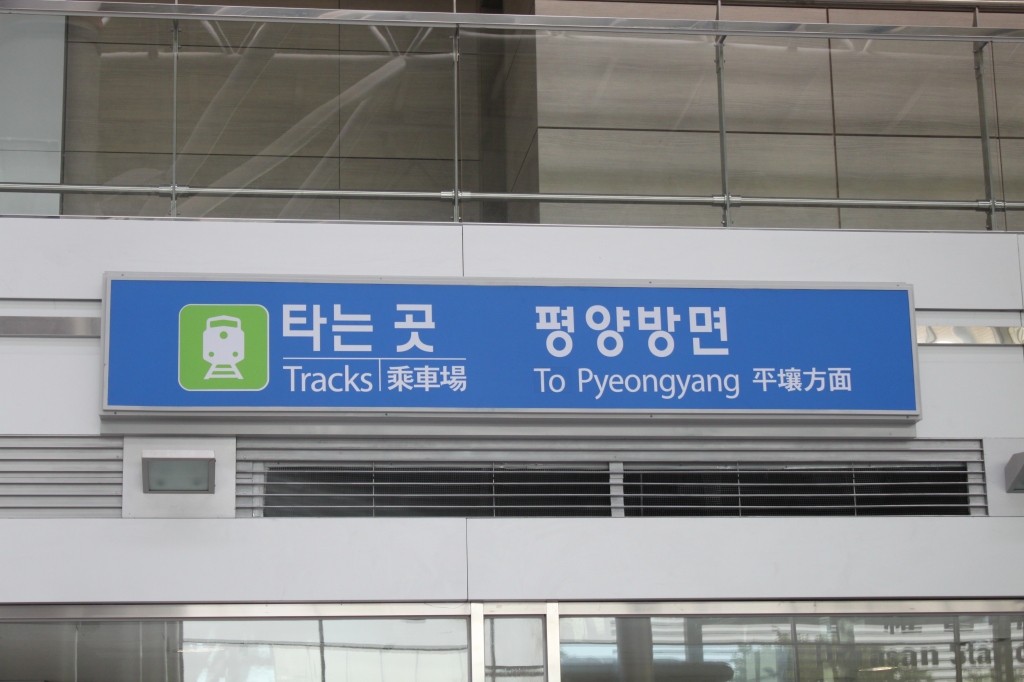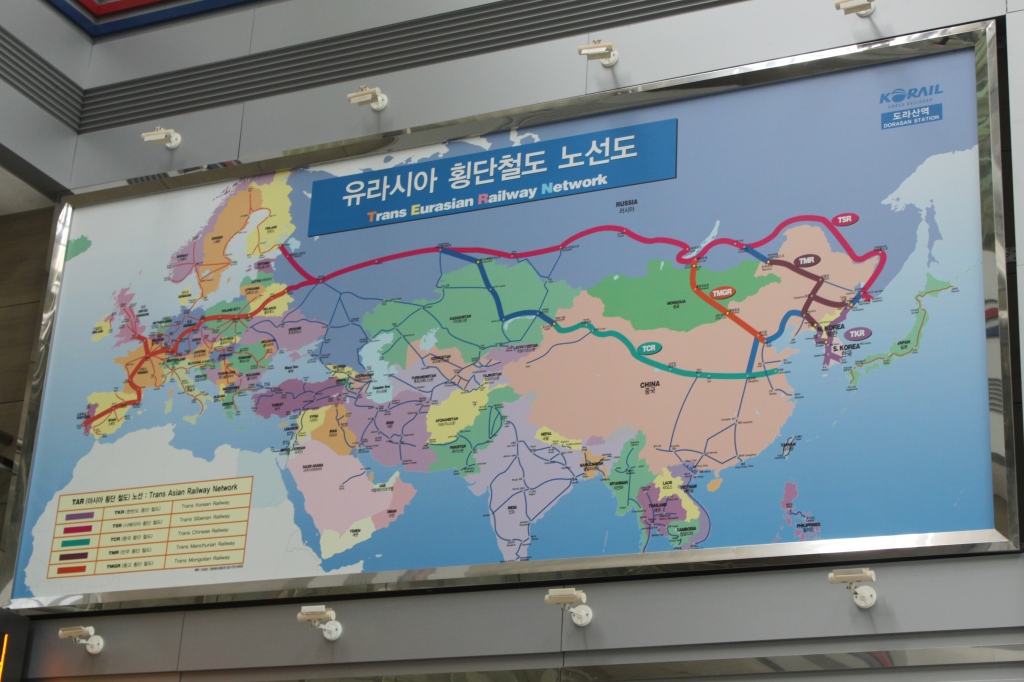Dorasan Station was the last stop in two ways. It was our last stop of the day on the USO tour of the DMZ and it is also the last stop in South Korea on the Gyeongui Line. The station was opened on February 12, 2002 and it is located 700m south of the DMZ. President Bush visited the station two weeks after its opening which pushed Dorasan Station into the international spotlight. Dorasan Station is an extremely modern building that looks like any other new Korail station. The only difference is that there is virtually nothing surrounding it and the only people inside are tourists.
In 2007, freight trains began running on the newly reconnected line, bringing materials into the North and bringing back finished goods to the South. But, in 2008, this service was stopped as heightened tensions between the two countries caused borders to be completely closed.
The station now mostly serves as a symbolism of what could be if the Korean peninsula was ever to be unified again. Above the turnstiles that lead to tracks hands a sign that says “To Pyeongyang”, reminding everyone who visits how close (around 200km) the North Korean capital is and easily accessible it could be. A large sign near the entrance reads “Not the last station from the South, but the first station toward the North.” Also inside the station are many maps that show how Korea could be connected to China, Russia, and the rest of Europe through rail travel should the two countries ever reunite. One could travel from Seoul to London completely on a train. The Gyeongui Line would travel though Pyeongyang in North Korea and connect to the Trans-Siberia railroad which, after a long trip through Russia, would eventually lead to Europe. Korea is touting this as a huge Eurasian connection and believes it would increase trade and economic activity between the two continents and allow for increased travel opportunities, including Trans-Siberian tours.
It would seem from this that the South is really pushing and hoping for reunification. But is this really the case? Lee Myung-bak, South Korea’s current president, has taken a harder stance against North Korea recently. And last year’s attacks by the North on the South’s Cheonan warship and Yeonpyeong Island have left tensions higher than they have been for years. In Pyeongyang, Kim Jong-il is getting ready to transfer power to his son, Kim Jong-un, next year and doesn’t show any signs of giving in to the pressures of the world’s biggest leaders. Do I believe the reunification is possible? Maybe, but it would come at the cost of many lives. As time goes on, in my opinion, the likelihood of the South initiating reunification becomes less and less. The younger generation remembers nothing of a unified Korean peninsula and familial ties with people in the North will become less strong. In addition, I have heard younger Koreans worry about the economic burden of reunification as the North has very little infrastructure and economic activity.
This tour was very enlightening and informative and allowed me to gain a better understanding on just how divided, both ideologically and physically, the two Koreas really are.
For more information about the USO DMZ tour, or make a reservation, visit the Koridoor website.






I want to take that train ride!
Same. Hopefully one day that will be possible.